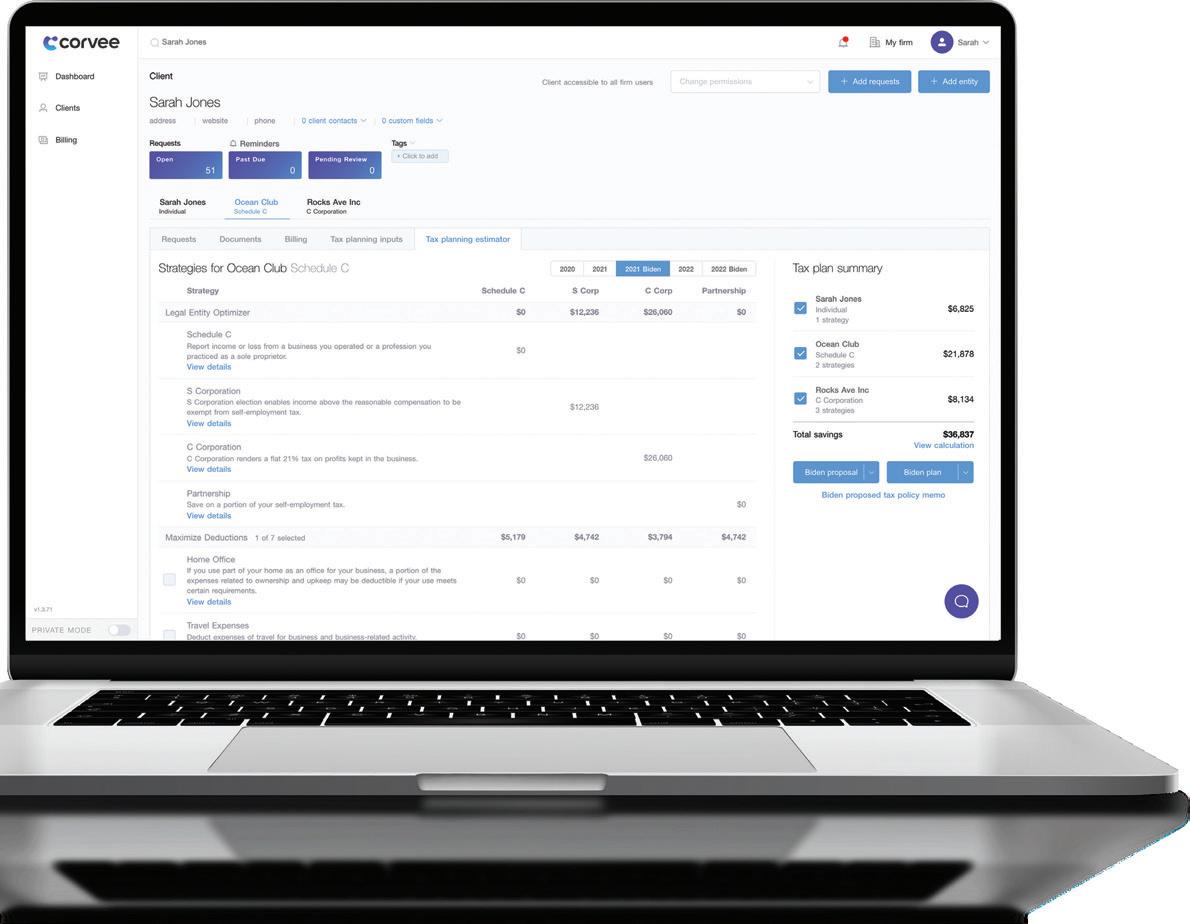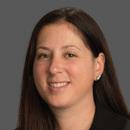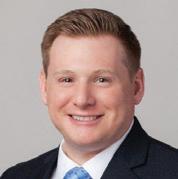
WINTER 2022/23 WHAT IS AND ISN'T INCLUDED IN THE INFLATION REDUCTION ACT OF 2022 4 TIPS FOR IMPROVING YOUR HIRING RESULTS UPSELLING CLIENT ADVISORY SERVICES: BEYOND THE BUZZWORDS



RALPH ALBERT THOMAS, CPA (DC), CGMA Chief Executive Officer & Executive Director rthomas@njcpa.org
THERESA HINTON Chief Operating Officer thinton@njcpa.org
DON MEYER, CAE Chief Marketing Officer dmeyer@njcpa.org
RACHAEL BELL Managing Editor rbell@njcpa.org
KATHLEEN HOFFELDER Senior Content Editor khoffelder@njcpa.org
DIANE ESPIRITU Senior Graphic Designer despiritu@njcpa.org
THE NEW JERSEY SOCIETY OF CERTIFIED PUBLIC ACCOUNTANTS
105 EISENHOWER PARKWAY SUITE 300, ROSELAND NJ 07068 973-226-4494 | NJCPA.ORG #NJCPAMAG
READ NEW JERSEY CPA ONLINE AT NJCPA.ORG/ NEWJERSEYCPA
TO ADVERTISE OR PROVIDE SPONSORED CONTENT
IN NEW JERSEY CPA Visit njcpa.org/advertising or contact Eileen Proven at eproven@njcpa.org or 862-702-5640
4
Upselling Client Advisory Services: Beyond the Buzzwords
Accounting advisories have grown by leaps and bounds, but only the most practical and vital services are being utilized the most. Data analytics, CFO budgeting services and cash flow forecasting are all add-on services to routine tax and audit practices.
6 What Is — and Isn’t — Included in the Inflation Reduction Act of 2022
The Inflation Reduction Act provides for major tax changes to the corporate alternative minimum tax and a surtax on the repurchase of corporate stock. It also includes significant funding for the IRS. Removed at the last minute, though, was any change to the taxation of carried interest.
8 4 Tips for Improving Your Hiring Results
A thorough routine for hiring can be the difference between failing to attract qualified candidates and finding the perfect fit for the organization. It’s equally important to have a job that matches a candidate’s natural style of work.
2
14
CLOSE UP
NJCPA Members Approve Bylaws Changes 10
BUSINESS MANAGEMENT
Key Metrics Businesses Need to Watch Pre-Recession

An Organizational Change Management Approach Ensures DEI and DEIB Are Sustainable 12
FINANCIAL PLANNING SERVICES
SPONSORED CONTENT
Rising Interest Rates Could Reduce Lump-Sum Pension Payouts
An Early Harvest?
FIRM MANAGEMENT Strategy Debate: Value Billing versus Hourly
SPONSORED CONTENT How to Reduce Customer Churn and Keep Clients Happy During Tax Season 16
PROFESSIONAL DEVELOPMENT
Virtual Interviews: Five Tips for Excelling Through the Screen 18
RISK & COMPLIANCE 6 Essential Practices to Protect Your Firm from Cyberattacks 19
TAX
Higher Education Tax Credits: What Are the Requirements?
The Death of Deducting Litigation Expenses: What’s Next?
21 TECHNOLOGY Year-End Crypto Tips for Practitioners 22 NJCPA NEWS y NJCPA CEO Ralph Albert Thomas to Retire in June y Applications Being Accepted for NJCPA Scholarships
y Mentoring Comes Full Circle with Internships
y 10 CPA Exam Fee Lottery Winners Selected
y NJCPA Publishes Audit Report 26
CLASSIFIEDS 28
MEMBER PROFILE
Della Hammer Cherchia, CPA, CGMA
THE MAGAZINE OF THE NEW JERSEY SOCIETY OF CERTIFIED PUBLIC ACCOUNTANTS WINTER 2022/23
contents
NJCPA Members Approve Bylaws Changes
In October, eligible NJCPA members were invited to participate in a bylaws vote affecting membership categories and the professional conduct suspension/ termination process. The vote, conducted by third-party vendor AssociationVoting, resulted in 1,546 member votes. The adop tion of proposed amendments required an affirmative vote of the majority of votes cast. All of the proposed changes to the membership categories and the professional conduct process were approved.
CHANGES TO MEMBERSHIP CATEGORIES
The approved changes to the membership categories address the profession’s CPA pipeline challenges along with anticipating the ongoing changes in the profession impacting the Society. The approved changes are as follows:
y The CPA Candidate and Associate membership classes will merge into a new membership class named Affiliate (approved by 79 percent of voting members). The following individuals will qualify for Affiliate membership:
• Those who have completed the academic requirements to become a CPA and are pursuing further requirements necessary to become a CPA (the previous CPA Candidate qualifications)
• Professional staff working in an accounting or finance position under the supervision of a CPA
• Any chartered accountant or its equivalent in any country other than the United States (the previous Associate qualifications)
• Instructors of accountancy in schools of collegiate standing
• Non-CPA owners, partners, shareholders or principals of firms licensed by the New Jersey State Board of Accountancy
Affiliates will not be allowed to vote on ballot measures presented to the membership but may be eligible for limited leadership positions including chapter board positions, committee chairs, group leadership and appointed committees. When an Affiliate becomes a CPA, he or she shall be elevated to CPA member.
y The definition of the Student member class will change to “An undergraduate or graduate student who has an interest in accounting, finance, business or information systems” (approved by 85 percent of voting members).
y The Fellow member class will be renamed CPA member; eligibility remains the same (approved by 80 percent of voting members).
“The NJCPA and the profession are at risk of losing talent, influence and opportu nity,” said Kathleen Powers, CPA, CGMA, PSA, 2022/23 NJCPA president and CFO
New Jersey CPA (ISSN 1534-6692) is published quarterly by the New Jersey Society of Certified Public Accountants, 105 Eisenhower Parkway, Suite 300, Roseland, NJ 07068.
Issue No. 93 Copyright © 2022 New Jersey Society of Certified Public Accountants. Annual membership dues include $9 for a one-year subscription to New Jersey CPA magazine. Members may not deduct the subscription price from dues.
Periodicals postage paid at Roseland, NJ, and at additional mailing office. POSTMASTER: Send address changes to New Jersey CPA, 105 Eisenhower Parkway, Suite 300, Roseland, NJ 07068-1640.
The materials and information contained within New Jersey CPA are offered as information only and not as practice, financial, accounting, legal or other professional advice. The opinions expressed herein are those of the authors and not necessarily those of the New Jersey Society of CPAs. Publication of an advertisement in New Jersey CPA does not constitute an endorsement of the product or service by the New Jersey Society of CPAs.
at The Matheny Medical and Educational Center. “The approved bylaws changes update terminology and simplify and consolidate categories, making it as easy as possible for graduates/new professionals to remain NJCPA members and start taking advantage of the benefits of membership.”
CHANGES TO PROFESSIONAL CONDUCT PROCESS
The other approved changes to the bylaws relate to the professional conduct process for implementing what are known as “automatic” suspensions and terminations. The two amendments, which were approved by 63 percent of voting members, remove the requirement that the NJCPA Board of Trustees approve all suspensions and terminations of members in order for the NJCPA to conform to the requirements of the AICPA Joint Ethics Enforcement Program (JEEP). Under the JEEP program, the AICPA investigates cases and refers its findings and recommendations to the NJCPA Professional Conduct Committees (PCC).
Certain disciplinary actions issued by various government agencies require automatic NJCPA termination or suspension without a hearing. However, in the previous version of the NJCPA bylaws, Board approval was required, which contradicts the JEEP’s automatics provisions and slows down the PCC processing of these cases.
“These changes to the professional conduct section of our bylaws will expediate the processing of certain cases involving suspension or terminations of membership and will have no impact on the severity of disciplinary actions,” added Powers.
The bylaws changes will go into effect June 1, 2023. The Affiliate category will be open for applications at that time.
For more details on the changes to the bylaws, visit njcpa.org/bylaws.
CLOSE UP
2 WINTER 2022/23 | NEW JERSEY CPA
Simplicity














Do it all online – no need for paper forms, software or even envelopes and stamps. You can also import the data directly from Excel, QuickBooks® or Xero accounting software. We save your payer and recipient data year-over-year to make future filings even easier.
















Security
As an authorized e-file transmitter, we protect your data using the strongest encryption program available. Data is then transmitted to our high-security, SOC 2-certified print-and-mail facility.
Savings
Pay only for the number of forms you file even if it’s only one. Plus, save the labor costs of printing, mailing and manually submitting the forms. TIN matching is also available on a per contact basis, saving you money and helping you avoid costly mismatches.
3 NEW JERSEY CPA | WINTER 2022/23 It’s Easy! Visit efile4Biz Today Remember – no software, no forms, no envelopes, no postage … and a lot less of your valuable time. ©2022 ComplyRight, Inc. *Offer details: Offer expires 1/26/23 at 11:59 p.m. ET. Enter Code 15OFFB12 at checkout. Discount cannot be used for Direct-to-State Filing, Edits, Corrections, TIN Matching, Form Credits, Service Bureau or Subscription Plans or combined with any other offer or applied to previously placed orders. Limit one discount per customer.
No Software – No Forms – No Hassle Print, Mail & E-File with efile4Biz Looking for an Easier Way 1099 W-2 SAVE 15%! Enter code 15OFFB12 at checkout* to Do 1099s & W-2s?
UPSELLING CLIENT ADVISORY SERVICES: BEYOND THE BUZZWORDS
 By KATHLEEN HOFFELDER NJCPA SENIOR CONTENT EDITOR
By KATHLEEN HOFFELDER NJCPA SENIOR CONTENT EDITOR


Upselling CAS, or increasing services offered to traditional tax and accounting clients, has been popular. But is there room to continue to upsell more services, and is upselling CAS needed to be competitive?
80 percent of respondents plan on offering or expanding advisory services in the future, and only 25 percent considered themselves a traditional firm, offering tax and compliance services.
Client advisory services (CAS), also referred to as client accounting services, have been providing a way for organizations to receive practical, hands-on solutions to increase cash flow, create opportunities for expansion, reduce costs with automation and more efficiently use data and analytics to monitor business needs. In short, CAS has grown up to be the youthful, energetic sibling in a family of well-established accounting and tax client offerings.
The answers depend. Indeed, those who have started offering CAS have shown a steady bump in revenue. As noted in a December 2021 Journal of Accountancy article showing results from a Client Advisory Services Benchmark Survey from CPA.com and the American Institute of CPAs’ (AICPA) Private Companies Practice Section (PCPS), “Client advisory services (CAS) practices saw a 20% growth rate in terms of net client fees per professional during fiscal year 2019 and the first few months of 2020.” That growth, it explained, outpaced the 12-percent growth CAS practices reported in 2018, when the inaugural benchmark survey was conducted.
A global take on CAS also showed an increase. According to a Spotlight Reporting 2021/2022 Global Advisory Trends Report, which included more than 600 responses from accounting professionals worldwide in July and August 2021, almost
So, which CAS are being upsold or considered leading contenders today?
Outsourced accounting and CFO services, workflow, risk management, advanced KPI reporting and business valuation services, to name a few.
“The services that clients are most interested in are generally more complex,” explained Christopher R. Cicalese, CPA, MSTFP, associate partner at Alloy Silverstein Accountants and Advisors.

To him, providing business performance insight like that of a CFO is popular.
Hayley Mayer, EA, a principal at Prager Metis, has also seen interest from clients in CFO services. “Many times, clients require assistance with a more-customized financial reporting package which is a natural for our CFO advisory services,” said Mayer.
“It’s an easy sell if the client currently has temporary staff handling their bookkeeping or if they are looking to reduce the amount
FEATURING (in order of appearance)
CHRISTOPHER R. CICALESE, CPA, MSTFP
Associate Partner
Alloy Silverstein Accountants and Advisors
HAYLEY MAYER, EA
Principal Prager Metis
SEAN P. BREHENEY, CPA, MBA Principal PKF O’Connor Davies, LLP
4 WINTER 2022/23 | NEW JERSEY CPA
of bookkeeping needed. Outsourcing is also a great way for the client to save money as they will not have to cover the cost of employee benefits and employer taxes,” she added. “It can also be an easy sell if the client currently has a part-time employee only coming in a few days a week; in this scenario, the client could benefit from CAS in that they would receive services more frequently since they are not dependent upon someone being present in the office.”
Retirement planning, wealth manage ment and trust/estate planning are also in favor as additional services. “With a large, aging population of business owners starting to look at the approaching future, many are focused on maximizing and preserving their wealth for themselves during retirement as well as for their future generations,” said Sean P. Breheney, CPA, MBA, principal at PKF O’Connor Davies, LLP. Utilizing client information that they are already engaged to review, he said, helps them highlight areas of need and/ or exposure as well as how to provide the services that would fill those areas of need.
However, Breheney cautioned that upselling can be either an easy or a difficult process. “Which path you are able to take depends on when you decide to take the jump. Approaching the subject of additional
services and how you are able to assist with them can be much easier if it is done during a quarterly review, tax planning meeting or even as a part of routine tax preparation,” he explained.
NEW WAYS TO BILL
The move to add new service offerings automatically lends itself to new billing structures, which can complicate issues with clients accustomed to hourly billing. CAS generally requires instituting a valuebased approach to billing as opposed to the more traditional hourly billing. According to the Journal of Accountancy article citing the CPA.com/AICPA survey, 28 percent of firms had value billing in 2020 for their CAS, compared with 10 percent in 2018. Also in 2020, 60 percent of respondents noted having fixed-fee pricing (which is usually per month), compared with 40 percent in 2018.
The timing of when to switch to such a new fee structure also needs to be considered to have the best results with clients. “If accounting firms switch their billing structure before the five-year mark, buyers are more than twice as likely to comply with the new arrangement than buyers who have been with an accounting firm for five or more years,” according to a
2020 CPA.com/Bill.com/Hinge Research Institute report on Business Model Trends for Accounting Advisory Services.

NOT FOR EVERYONE
Though attractive, upselling can cause challenges if a firm is not staffed accordingly or ready for the challenges that those new service offerings may entail. “Upselling is not necessarily for everyone, as you need to make sure you have the capacity and expertise to perform the services at your standard,” added Cicalese. “Potentially, by upselling additional services without the capacity, you could provide a bad experience to the client and harm your professional reputation.”
And not all industries are easily adaptable to CAS methods and procedures. As Mayer noted, “a client in the real estate industry may require specialized software that your current staff is not trained in. It’s important to consider that if the client is not satisfied in this instance, you might not only lose the client for CAS but also as a tax client.”
She believes upselling these services is still necessary to compete. “Providing a one-stop shop simplifies things for the client by having their whole team under one roof. Ideally, if you already have a trusted relationship with a client, they will be more apt to consider you for other services they may need,” said Mayer.
Breheney cautioned that firms should not rely on upselling alone, however, to remain competitive in today’s marketplace. “I do not believe that it is necessary to upsell clients in order to survive competitively, though it can be of use in the absence of an effective marketing strategy. Gaining attention for oneself in such a market is achieved by showing your potential client base how you are different compared to your competition, by the added value you create with the services you provide,” he explained. “Upselling, while a valuable tool for any CPA, does not allow for a similar impact.”
READ MORE CAS KNOWLEDGE HUB njcpa.org/hub/cas
5 NEW JERSEY CPA | WINTER 2022/23
WHAT IS — AND ISN’T — INCLUDED IN THE INFLATION REDUCTION ACT OF 2022
By ADAM L. SANDLER, J.D., LL.M. AJ WEALTH LLC

The IRA provides for two major tax changes — a 15-percent corporate alterna tive minimum tax (AMT) and a 1-percent surtax on the repurchase of corporate stock. More importantly, the IRA allocates approximately $80 billion in funding to the IRS. However, any change to the taxation of carried interest is notably missing from the final version of the law.
CORPORATE MINIMUM TAX
The Inflation Reduction Act of 2022 (IRA) was signed into law by President Biden on Aug. 16, 2022. It has been championed by the administration and Congress as the most sweeping climate and energy reform in history, although it’s a far cry from the various tax proposals that have been made over the past few years.
The IRA imposes a new AMT on corpora tions (other than S corporations, regulated investment companies and real estate investment trusts) equal to 15 percent of their “adjusted financial statement income” (AFSI) if AFSI exceeds an average of $1 billion annually over a three-year period (i.e., the tax-year at issue and the prior two tax-years).
AFSI is defined under IRC § 56A as “the net income or loss of the taxpayer set forth on the taxpayer’s applicable financial statement for such taxable year, adjusted as provided in this section.” In general, an applicable financial statement is one that is prepared in accordance with generally accepted accounting principles and meets the requirements of IRC § 451(b)(3).
The corporate AMT is effective for tax years beginning after Dec. 31, 2022.
STOCK REPURCHASE SURTAX
The IRA imposes a 1-percent surtax on the fair market value of any stock in a publicly traded domestic corporation that is “repurchased” by such corporation through
a redemption or economically similar transaction (see IRC § 4501). Of course, there are exceptions. The IRA does not impose the surtax where the repurchase is:
y Part of a tax-free reorganization
y Contributed to an employer-sponsored retirement plan or employee stock ownership plan
y For less than $1 million (in the aggregate of all repurchases during the tax-year)
y Made by a dealer in securities in the ordinary course of business y Made by a regulated investment company or real estate investment trust y Treated as a dividend
Like the corporate AMT, the new law applies to stock repurchases occurring after Dec. 31, 2022.
IRS FUNDING
It is no secret that the IRS has consistently struggled to perform. There are widespread reports of unanswered phone calls, millions of unprocessed paper returns, archaic technology and a workforce decimated by the COVID-19 pandemic. The IRA’s distribution of approximately $80 billion in funding to the IRS over the next 10 years is expected to address these issues, increase productivity and capture foregone revenue. The IRA allocates the funds as follows:
y $3.18 billion for taxpayer services y $45.63 billion for enforcement
6 WINTER 2022/23 | NEW JERSEY CPA
y $25.32 billion for operations support y $4.75 billion for business system modernization y $15 million for development of a new e-file system
y $403 million for general administration y $104 million for tax policy y $153 million for Tax Court y $50 million for Treasury office expenses
THE CARRIED INTEREST SAGA
The most interesting and controversial proposed tax change was eliminated from the bill at the eleventh hour to secure Senator Kyrsten Sinema’s vote — taxation of carried interest.
Pooled investment vehicles like private equity (PE) funds are typically structured as a partnership made up of one general partner (the PE firm that manages the fund) and numerous limited partners (“silent” individual investors). The general partner raises capital to purchase a portfolio of several private companies with the intention of selling those interests for a profit by the end of the fund’s term.
While the individual members of the PE firm may invest directly in the portfolio companies through “co-investment” vehicles, the PE firm itself generally makes little to no capital investment as the general partner. It is compensated with a manage ment fee and a profits interest in the fund’s performance. This profits interest is known as “carried interest” or simply “carry.” While not used in every case, the “2 and 20” model is commonly used to structure these fees — a 2-percent management fee and a 20-percent carry in excess of any hurdle. The remaining profits are distrib uted to all the investing partners, pro rata, subject to any adjustments in the distribu tion waterfall.
When the fund sells a portfolio company, it generates a capital gain. Because the interest in the portfolio company would likely be held for more than three years before sale, the gain that flows through to the general partner and out to the members of the PE fund as carry qualifies for long-term capital gain (LTCG) treatment. Thus, carried interest is taxed at a much lower rate than ordinary income or short-term capital gain (STCG).
This tax treatment has received much opposition over the years by those who would like to see carry taxed at the higher ordinary income rates. Some headway was made by the opposition in 2017 when the Tax Cuts and Jobs Act enacted IRC § 1061, which governs the way carried interest is currently taxed. Sec. 1061 increased the required holding period for LTCG treatment of carried interest from one year to three years. In practice, however, it minimally affects carried interest for PE funds because portfolio companies are likely to be held by the fund for more than three years.

The proposed changes that did not make it into the IRA would have amended Sec. 1061 by affording LTCG treatment at the individual partner level to gain which is realized more than five years after the later of (1) the date on which the individual partner (the taxpayer) acquired substan tially all of its interest in the general partner of the fund or (2) the date on which the fund acquired substantially all of its assets. This five-year rule would have instituted a significant hurdle for PE firms to receive LTCG treatment of carried interest, but for now, taxation of carried interest remains unchanged.
READ MORE
INFLATION REDUCTION ACT KNOWLEDGE HUB njcpa.org/hub/ira
LEARN MORE
Dec. 7, 16 and additional dates, Live Webcast
INFLATION REDUCTION ACT OF 2022: EXPLANATION AND PLANNING
Dec. 8, 9 and additional dates, Live Webcast
THE BEST FEDERAL TAX UPDATE COURSE njcpa.org/events
Adam L. Sandler, J.D., LL.M., is the director of wealth planning at AJ Wealth LLC and can be reached at adam@ajwealthllc.com
7 NEW JERSEY CPA | WINTER 2022/23
4 TIPS FOR IMPROVING YOUR HIRING RESULTS
By JACQUELINE LOMBARDO, MHR BOOMER CONSULTING, INC.

Almost all business owners and hiring managers have thought they had the perfect candidate only to discover the candidate’s expectations don’t align with the organization’s needs. Or, during negoti ations, the organization doesn’t offer a key benefit that the candidate is looking for.
While hiring is not a one-size-fits-all process, below are four key actions organi zations should consider.
LEVERAGE CONATIVE SKILLS
When it comes to people’s minds, there are three parts:
y Cognitive (intelligence)
y Affective (feelings and emotions)
y Conative (doing)
According to the Kolbe Corp (kolbe.com/ kolbe-wisdom), people’s conative minds contain the instincts and innate attributes that define their natural method of operation (MO). Individuals are more productive, comfortable and successful when they work in their natural style. One’s conative mind drives action, and actions drive performance.
A company could have two candidates with the same education, skills and profes sionalism, but they would each do the job differently, and one may better align with how the organization needs the job done.

What if employers could identify if a job’s demands would line up with the candidate’s instinctive way of working? This would help increase retention and productivity and reduce job-related stress.
By leveraging conative assessments, such as the Kolbe A™ Index, organizations can help define role requirements and supervisor
compatibility. Employers can also build a range of success that will help them identify the fundamentals of how a successful person will take action in a specific job role, screen candidates, stream line the hiring process and ultimately reduce turnover.
OFFER WELL-BEING PROGRAMS
The past few years have created unique challenges for many people — not only in their professional lives but also in their personal lives. Now, more than ever, job seekers are looking to see what programs an organization has that support their mental and emotional health, work-life balance and flexibility. An organization’s well-being programs (or lack thereof) can greatly impact whether a candidate wants to work for the organization.
Employers should take some time to review their current offerings in the following areas:
y Mental health and emotional wellbeing. Does the organization have an employee assistance program (EAP)?
EAPs are a great way to provide a
Hiring can be one of the most stressful aspects of running a business. It’s also costly — especially if a new hire doesn’t work out.
8 WINTER 2022/23 | NEW JERSEY CPA
confidential source that employees can use when facing challenges. These programs provide employees with resources such as therapy, substance abuse programs, financial counseling and crisis management. Mindfulness and meditation programs or apps can also be valuable resources. Apps such as Calm (calm.com) and Head space (headspace.com) now offer corporate plans.
y Work-life balance. How does the organization promote work-life balance? Does it offer remote working arrange ments? Are there flexible work hours or is the team required to work from nine to five? Are staff encouraged to take time off and have proper backup coverage to make them feel comfortable unplugging? What kind of parental and adoption leave policies are in place?
Multiple policies and programs can support employee well-being, but it’s essential to have a well-thought-out program that employees find valuable. Establish an employee-driven wellness committee to help build and sustain the wellness culture
of the organization. Then, when it comes to hiring, candidates will not only see that the company supports well-being, but they will also know that employees have a voice and say in the things that matter the most to them.
CONSIDER HIRING INCENTIVES
Hiring incentives can help attract and retain talent. But, if the organization has hiring incentives, are they communicated to the team? Employers often offer benefits for candidate referrals, and for a good reason. According to a CareerBuilder ebook, 82 percent of employers rated em ployee referrals highest in terms of return on investment.
There are many ways to incentivize employee referrals, including:
y Tiered system. Employees can get more rewards based on how far their referral goes in the hiring process. For example, having someone apply might be worth $100. If their candidate gets a job offer, the bonus might jump to $500.
y Long-term payout. Referral bonuses are paid depending upon how long the candidate stays. For example, once their candidate is hired, the referring employee receives $500. At the new hire’s six-month anniversary, the referrer gets another $500 bonus.
y Lump sum. Referral bonuses are paid in one lump sum once the new hire starts working.
LEVERAGE OUTSOURCING
Outsourcing is an excellent option for having someone who is not part of the company’s full-time or permanent staff complete a task or project for the organization. This on-demand help allows the staff to focus on other aspects of the business while still providing excellent client service.
Here are a few ideas of tasks and projects that can be outsourced:

y Administrative work. Some admin istrative tasks seem to take too much time but are vital for keeping the com pany running efficiently. For example, consider working with a virtual assistant to manage executives’ inboxes, schedule
appointments, perform data entry work and more.
y Tax preparation. This is a great way for accounting firms to acquire seasonal help during the busy season or expertise in specific niches.
y Technology. Freelance or contract IT professionals can help handle all or part of a company’s IT needs, from software development to maintenance and support.
y Project management. An outsourced project manager can bring unique skills to the organization and help get projects completed on time and on budget.
Finding the right hire for an organiza tion is essential to running a successful business. The company must align with the candidate’s core values, wants and needs and vice versa. Take a good look at the tips above, compare them to existing hiring processes and identify changes that can be incorporated immediately. Well-constructed hiring processes can be the difference between failing to attract qualified candidates and finding the perfect fit for the organization.
Jacqueline Lombardo, MHR, is a project manager at Boomer Consulting, Inc. She can be reached at jacqueline.lombardo@boomer.com.
LEARN MORE
Feb. 16, Live Webcast (replay on Feb. 28) 2023 HIRING AND COMPENSATION TRENDS (free for NJCPA members)
Dec. 28, Live Webcast CREATING & DEPLOYING FLEXIBLE WORK OPTIONS
THE
THE RIGHT
On Demand THE TEAM, THE TEAM,
TEAM: GETTING
PEOPLE ON THE BUS njcpa.org/events
9 NEW JERSEY CPA | WINTER 2022/23
READ MORE EMPLOYEE MANAGEMENT KNOWLEDGE HUB njcpa.org/hub/ employeemanagement
Key Metrics Businesses Need to Watch Pre-Recession
BY SALVATORE SCHIBELL, CPA, CFP®, CGMA, LAWSON, RESCINIO, SCHIBELL & ASSOCIATES, P.C.
may change. This metric can indicate the estimated demand for products now and in the immediate future.
y Consumer spending: The U.S. Depart ment of Commerce releases a monthly report on economic activity. This report assesses personal wealth and how much disposable personal income people have. When people have higher disposable income, they are more likely to spend.
y Cash flow is critical to the success of any business. Renegotiating customer payment terms, enforcing late payment fees, offering early payment discounts and changing invoice cycles to encourage customers to pay faster are all measures that can help with cash flow.
We are in uncertain times caused by inflation, geopolitical unrest and other influences. Inflation is a significant threat to the financial stability of the economy. The Federal Reserve’s monetary policy of increasing interest rates to control inflation is an important step. Still, the result will cause an economic slowdown affecting all aspects of doing business. Most economists say we should prepare for the possibility of a recession. Here are some of the key metrics business owners should watch.
GLOBAL AND REGIONAL METRICS
Global and regional metrics give a macro economic view of consumer and industry buying behavior.
y Unemployment: The U.S. Bureau of Labor Statistics releases monthly and yearly employment data. The employ ment figures signal if the labor markets are going up or down. A steep decline could indicate that a recession is on the horizon. Employers should keep a close eye on employment levels within their organization. A drop in output often accompanies a decline in employment.
y Consumer confidence: The Consumer Confidence Report gauges how people feel about the economy. When consumer confidence is high, customers spend more and feel financially stable. When it is low, consumers spend less. A decline in consumer confidence is a warning sign that customer behavior
y Housing activity: A key metric is housing starts which tracks the number of new residential construction projects. A decline in this metric signifies that housing demand is weakening and investors are pulling back. A drop in this metric usually signals the beginning of a recession.
INDIVIDUAL BUSINESS METRICS

A business’s financial metrics can signal that the company is in trouble or provide reassurance that everything is fine.
y Sales revenue must be watched continuously; a decline could be caused by a change in consumer demand, poor customer service or variation in quality.
One tactic is to conduct a focus group and customer satisfaction survey to determine what is causing the problem and how to fix it.
y Cost of goods sold (COGS) shows how efficiently a company operates. An increase in this metric can indicate that the company is paying too much for raw materials, has inefficient production and fulfillment practices or has labor problems. Companies can renegotiate prices and payment terms with suppliers, find new sources of materials, buy in bulk, use less expensive goods and improve operating procedures and processes. Keep in mind that quality should never be compromised to reduce costs.
y Net profit margin discloses how much actual profit is made from sales by removing expenses. To improve profits, companies need to elevate their brand, increase the perceived value of their merchandise, increase average order size, streamline operations, reduce operating expenses and optimize vendor relationships.
Most key metrics point towards a recession. How companies react and scale their business will either help them survive or die. Companies need to have a strategic plan in place to combat the recession. This plan should address all business disciplines — operations, marketing, human resources, information technology and finance. Management should watch key performance indicators that can make or break the company, benchmark these metrics against business and industry data, and implement procedures and safeguards to minimize the effect.
Salvatore Schibell, CPA, CFP®, CGMA, is the tax partner at Lawson, Rescinio, Schibell & Associates, P.C. He is a member of the NJCPA Federal Taxation and State Taxation interest groups and can be reached at salschibell@lrscpa.com
LEARN MORE
Dec. 15, Live Webcast
CURRENT DEVELOPMENTS AND BEST PRACTICES FOR TODAY’S CFOs AND CONTROLLERS njcpa.org/events
BUSINESS MANAGEMENT
10 WINTER 2022/23 | NEW JERSEY CPA
An Organizational Change Management Approach Ensures DEI and DEIB Are Sustainable
BY BETH THOMAS AND JULIE KANTOR, CHANGE 4 GROWTH
Diversity, equity and inclusion (DEI) is a growing and important focus for many organizations. DEI efforts strive to create workplace environments that are welcoming and appealing to everyone by celebrating and leveraging our differences, including, but not limited to, ethnicity, education, skin color, age and sexual orientation. Companies have recognized that they are responsible for improving DEI to elevate stakeholder (employees, customers and the community) engagement. Belonging is a big component of DEI — it now has its own abbreviation. DEIB, which stands for diversity, equity, inclusion and belonging, has come into its own as a key component of a DEI strategy.
WHY DEIB?
Research shows that diversity at work and financial performance are linked. A 2018 McKinsey & Company study entitled Delivering Through Diversity found that gender and ethnic diversity are correlated with profitability. Additionally, companies committed to DEIB can better attract top talent, enhance customer and employee satisfaction, and improve decision-making. Diverse individuals bring unique life experiences and perspectives to the organization, leading to innovation, novel services/products and high-performing teams. Numerous studies show that when employees from diverse backgrounds and cultures collaborate on projects, there is a better chance that they will find solutions faster. A survey1 of more than 500 businesses found that every 1-percent increase in diversity correlates with a 3- to 9-percent rise in sales revenue.
SLOWLY MAKING PROGRESS
While DEIB and overall DEI is essential to the success of organizations, there remains a gap between what has been done and what still needs to be accomplished. Ceridian found in its 2022 Executive Survey2 that although 90 percent of respondents have a
DEI strategy, only one-third say that progress is being made in this area. PwC also found that organizations still have to make progress in designing and executing DEIB programs. Nearly a third of its Global Diversity & Inclusion Survey3 respondents indicated that only 4 percent of organizations are succeeding in critical dimensions of successful DEIB programming.
BARRIERS TO SUCCESS
Many obstacles stand in the way of becoming a diverse, equitable and inclusive orga nization. The work of DEI professionals often requires changing hearts and minds to overcome real human feelings, egos and learned behaviors. While there are laws in place to protect workers from discrimination, more work must be done to evoke lasting organizational change.
PwC found that 80 percent of leadership engagement on DEIB remains at the primary or emerging levels, and only 25 percent of organizations have DEIB goals for their leaders. A mere 17 percent of these companies have a C-suite-level diversity role, while nearly 31 percent do not have a DEIB leader.
ONE VIABLE SOLUTION
Companies must recognize that no matter how many DEIB interventions are introduced into the workplace, nothing will change if employees are not being held accountable for the environments that they are cultivating. The company’s culture must change for the organization to fully accept a diverse workforce.
Organizational change management (OCM)4 is a method of leveraging change to achieve a successful and sustainable transformation. OCM drives the successful adoption and usage of change within the business. It allows employees to under stand and commit to the shift and work effectively during it.
Margaret Regan, president and chief executive officer of The FutureWork
Institute, Inc., asked more than 300 diversity practitioners if an OCM approach would make a difference. More than 86 percent of the Inclusion Allies Coalition (IAC) webinar participants said an OCM approach is needed to drive more robust DEIB results.
Hiring a chief diversity officer, establishing goals, launching training programs and updating vision and mission statements are all important, but much more must be done to make a cultural change. OCM can provide the framework for sustainable change within an organization.
1 workstatus.io/blog/reasons-why-dei-in-theworkplace-is-essential-for-progress/
2 ceridian.com/blog/achieving-organizational-agility -through-workplace-diversity-equity-and-inclusion
3 pwc.com/gx/en/services/people-organisation/ global-diversity-and-inclusion-survey.html
4 online.hbs.edu/blog/post/organizational-changemanagement
Beth Thomas is the chairwoman and CEO of Change 4 Growth. She can be reached at bthomas@ change4growth.com. Julie Silard Kantor is vice president of leadership, culture and DEIB at Change 4 Growth. She can be reached at jkantor@ change4growth.com
LEARN MORE
Dec. 6, Jan. 3 and additional dates, Live Webcast
HOW TO BE A CHANGE LEADER Dec. 16, Live Webcast
DIVERSITY, EQUITY, INCLUSION & BELONGING njcpa.org/events
READ MORE
DIVERSITY, EQUITY & INCLUSION KNOWLEDGE HUB njcpa.org/hub/diversity
BUSINESS MANAGEMENT
11 NEW JERSEY CPA | WINTER 2022/23
Rising Interest Rates Could Reduce Lump-Sum Pension Payouts
BY JAY MOTA, CFP®, CDFA®, CHFC®, AMERIPRISE FINANCIAL
Many employees today participate in a defined benefit retirement plan. A key feature of this benefit type is that it allows some participants to choose, at the point of retirement, to either receive the vested benefit amount either in a single lump-sum payout or through a series of payments over time.
Since choosing between these two payment options is often permanent and irreversible, helping clients make a thoughtful and informed decision is key. Complicating matters in this decision-making process today, however, is rising interest rates — particularly as it relates to the value a participant receives under the lump-sum distribution option.
Rising interest rates typically have a negative impact on asset values. This is due to the way present value is calculated for an asset. The economic principal known as “discounted cash flow,” states that the current value of a financial asset is the present value of all future cash flows. Simply put, this means that the way asset values are determined is by discounting all future cash flows back to present time, using a stated discount rate (an interest rate).
Since future cash flows are reduced by the discount rate, a higher discount rate will result in a lower present value of an asset. The opposite is also true. A lower discount rate leads to a higher present value.
Consider the following example of this concept. Assuming a 4-percent discount rate, a participant would be indifferent between receiving $1,000 per month for the next 10 years (a total of $120,000 over time) or $98,770 today. However, if the discount rate is increased to 6 percent, the

participant would accept receiving $90,073 today (roughly 9 percent less) or the same fixed payment of $1,000 per month for the next 10 years. Intuitively, what the math behind these calculations is suggesting is that a participant receiving a lump-sum payout will be able to reinvest these assets at prevailing interest rates. Thus, at higher interest rates, less initial principal is required to generate future cash flows; at lower interest rates, more initial capital will be required.
Interest rates today are dramatically higher than last year as the economy wrestles with elevated inflation. For example, the yield on a 10-year Treasury bond, which acts as a common benchmark rate for the economy, has more than doubled in 2022, starting the year at 1.24 percent and closing at 3.41 percent on Sept. 14, 2022. Furthermore, specific to defined benefit retirement plans, a blend of corporate bond yields is commonly used to calculate lump-sum payout amounts. Importantly, these corporate yields are typically higher than those on Treasury bonds with similar maturities.
Stark yield increases have not only increased borrowing costs for many consumers and businesses across the economy, but they may have notably caused a reduction in lump-sum payouts for participants in defined benefit plans. Many plan participants, especially those nearing or at their desired retirement age, could soon see their lumpsum value fall should interest rates move higher or retirement plan calculations catch up with current market levels.
Understandably, participants will have questions about their course of action, including:
y Does it make more sense to take a reduced lump-sum from my pension or receive the annuity amount over time?
y Can I still afford to retire on this lump-sum value?
y What interest rate and inputs are used to calculate my specific lump-sum payout, and how likely are these inputs to change over the next year?
Savvy CPAs should be prepared to answer these questions for their clients.
This information is provided only as a general source of information and is not intended to be the primary basis for investment decisions. It is not a solicitation to buy or sell the securities mentioned and should not be construed as advice designed to meet the particular needs of an individual investor. Please seek the advice of a financial advisor regarding your particular financial concerns.
Jay Mota, CFP®, CDFA®, ChFC®, is a financial advisor at Ameriprise Financial Services, LLC. Ameriprise Financial is an NJCPA premier partner. Jay can be reached at jay.mota@ampf.com
Ameriprise
FINANCIAL PLANNING SERVICES SPONSORED CONTENT
READ MORE FINANCIAL PLANNING SERVICES KNOWLEDGE HUB njcpa.org/hub/financialplanning
MORE Dec. 8, Live Webcast SOCIAL SECURITY AND MEDICARE: PLANNING FOR YOU AND YOUR CLIENTS njcpa.org/events
LEARN
Financial, a premier partner with the NJCPA, offers flexible partnership opportunities to help increase revenues and help your clients make more confident financial decisions. Learn more
12 WINTER 2022/23 | NEW JERSEY CPA
at ameripriseadvisors.com/jay.mota
An Early Harvest?
BY DAVID TEPP, CPA, PFS, MBA, TEPP WEALTH MANAGEMENT
The past year has presented an enormous challenge to all investors. The repercus sions of aggressive Federal Reserve interest rate hikes, the highest level of inflation in decades, massive labor demand and the first major war in Europe in 80 years has strained financial markets and prompted the threat of global recession. As a result, the September plunge in the U.S. stock market offers an unusual opportunity to harvest losses. Before investors dive in and start selling, however, there are a variety of important strategies and critical tax concepts that should be considered.
ANALYZE CURRENT FINANCIAL MARKET CONDITIONS
The Fed is expected to continue raising interest rates as long as inflation remains elevated. Labor costs also remain quite high which will likely stifle corporate profitability. If the financial markets continue to project lower earnings, valuations and stock prices will likely continue to plummet. Asset allocation is always paramount but particularly so during volatile market swings. In bear markets, stocks in defensive sectors tend to perform a bit better while more-risky asset sectors may encounter greater headwinds. Now that interest rates are well off of their historic lows and with the Fed contemplating even more rate hikes, it may be a good time to consider shifting some assets from equity to bond securities.
LOCK IN LOSSES
Advisors need to select securities that offer the best opportunities for locking in losses. Certainly, if there’s a loss on an investment in which you have lost confidence, that should be among the top of the list to sell. If the underlying security is a mutual fund or ETF, then consider the industry or asset class on which the fund/ETF is targeted and whether it is consistent with the target allocation.
Remember that losses can be harvested simply by trimming holdings as opposed to divesting entirely. Extra attention should be paid to tax lots as each will often have separate tax consequences.
EVALUATE THE TAX IMPLICATIONS
It is imperative to consider each client’s personal tax situation. Remember that if there are insufficient capital gains to be off set by losses, $3,000 of accumulated losses per year can be applied against ordinary income. As a result, the client’s current and future expected marginal tax rate is an important consideration. Before beginning to harvest gains and losses, be sure to review the client’s prior tax return to understand their current capital gain/loss tax position.
If a client’s income and tax rate is expected to be lower in the future, capital loss harvesting may yield only a limited benefit.
Particular attention should be paid to the nature of the capital losses, specifically whether they are short- or long-term. Optimally, capital losses should offset short-term capital gains which are taxed as ordinary income.
CONSIDER THE WASH SALE RULE
Perhaps the trickiest area of capital loss harvesting is the IRS wash sale rule. Put simply, after selling an investment at a loss, investors must wait 30 days before or after the day of sale. If the investor disregards this rule, the loss is not deductible; instead, the loss is added to the cost basis of the underlying replacement security. The wash sale rule also prohibits the acquisition of a security 30 days prior to the sale which, in essence, creates a 61-day wash sale window.
The wash sale rule may apply if a taxpayer sells a security and then, within the allotted 30-day period, acquires a security that is deemed to be “substantially
identical.” The IRS is rather ambiguous with their definition of this term, partic ularly as it pertains to mutual funds and ETFs. Tax and financial professionals should discuss this with clients and establish the position they are willing to take before committing to further trades.
Note that the wash sale rule applies to both taxable and qualified retirement accounts for both the taxpayer and spouse. In other words, in the event of a sale of a security in a taxable account, the taxpayer and spouse are prohibited from acquiring a substantially identical security in any investment account for 30 days. Otherwise, the loss will be disallowed for tax purposes and there will be no cost-basis adjustment in the applicable qualified retirement account. (Refer to Revenue ruling 2008-5.)
As an additional consideration, any unused capital losses must be leveraged in the year of the taxpayer’s death, or they will be lost entirely. Tax and financial pro fessionals should certainly keep this mind with clients who are encountering severe health issues and consider locking in losses while they remain useful.
Taking all of these factors in consider ation, advisors may be able to help clients find a silver lining in what has been an otherwise difficult year.
David Tepp, CPA, PFS, MBA, is the owner of Tepp Wealth Management. He is a member of the NJCPA and can be reached at dtepp@teppwealth.com

FINANCIAL PLANNING SERVICES
MORE
PLANNING SERVICES KNOWLEDGE HUB njcpa.org/hub/financialplanning
MORE Dec. 29, Jan. 25 and additional dates, Live Webcast
HAIG'S PERSONAL FINANCIAL HEALTH CHECKUP njcpa.org/events
READ
FINANCIAL
LEARN
WALTER
13 NEW JERSEY CPA | WINTER 2022/23
Strategy Debate: Value Billing versus Hourly
 BY DAVID A. LOPEZ, CPA, DAVID A. LOPEZ AND COMPANY, LLC
BY DAVID A. LOPEZ, CPA, DAVID A. LOPEZ AND COMPANY, LLC
I began noticing the conversations discussing the pros and cons of value pricing versus traditional hourly billing in CPA firms about four or five years ago. As a small firm practitioner, the debate intrigued me. Asking myself the following questions prompted me to dig deeper:
y Are the traditional hourly rates intimidating to small business clients?
y Should hourly-rate pricing be reserved for larger companies where management is accustomed to paying other professionals, such as lawyers, at a price point that is usually higher than accountants?
y Is the idea of value pricing too vague for smaller, maybe less-sophisticated clients?
HOURLY BILLING
Traditionally, firm management would look at billable hour reports to assess prof itability, the adequacy of current staffing levels and professional staff utilization. In some firms, the number of billable hours a CPA individually logs could even affect their compensation. This method is tried and true, but there are some downsides to the hourly billing framework:
y Slower work. When staff members are obsessed with hours charged to clients, it can slow work down. They become preoccupied with how many hours they are posting instead of working efficiently to complete a project for the client.
y Reduced profit margins. As technology advances, the time needed to complete tasks inherently lessens. If we are billing based on hours work, our invoice must be lower. It’s simple math.
y Unhappy team members. We are CPAs. We can add. Staff may not understand what the firm’s hourly rates represent, but they clearly understand their salary. Therefore, a young staffer can understand their annual salary is approximately x dollars per hour; the firm bills me at y dollars per hour; the firm is making a lot of money off me. Many managers do not educate staff on what the hourly rates represent or how they are constructed. It’s kept a mystery. Management may think this is not important, but it is. I left a firm for that exact reason.
VALUE BILLING
As CPAs, we assess value. When we audit, we must value accounts receivable, fixed assets and liabilities. So, why is it difficult for us to calculate our value to our clients?
It’s not. Just like hourly rates, value billing has its pros and cons.
I see value billing as a way to increase overall revenue and the profit margin. As mentioned above, with improvements in technology, it takes less time to complete audits, tax returns and other services. With hourly rates, less time equals lower client invoices. But has the value of that project decreased? Most likely no, so billing the value of the project as opposed to the time expended makes tremendous sense.
Our firm moved to value billing during the COVID pandemic. Since making the switch, I have seen a significant increase in gross revenue and profit margin. With value billing, our cash flow has increased and become more stable. The client knows the cost of the project in advance. Since we have an agreed-upon price, the invoice that is presented is not a surprise. Clients often have our fees already budgeted/ allocated and ready to be disbursed when they receive our bill.
If there is a downside to value billing, it has to be the time and effort expended to make the change. Moving to value billing is a change in mindset. It forces you to take time to look at your practice and honestly assess your value as an accountant. This is something many CPAs have never really done.
THE BOTTOM LINE
If I had to declare a winner, I would say value billing is the victor. Hourly-rate billing is the tradition that accountants and clients know and understand. But, for firm management, value billing is the way to go. It increases profits and productivity and truly assesses how valuable our services are in the marketplace.
David A. Lopez, CPA, is the founder of David A. Lopez and Company, LLC. He is a member of the NJCPA and can be reached at dlopez@ davidlopezcpa.com
FIRM MANAGEMENT
READ MORE FIRM MANAGEMENT KNOWLEDGE HUB njcpa.org/hub/firmmanagement
14 WINTER 2022/23 | NEW JERSEY CPA
How to Reduce Customer Churn and Keep Clients Happy During Tax Season
BY ILYA RADZINSKY, TAXDOME
No matter their size, all accounting firms are overloaded during tax season. Employees must work overtime — sometimes as much as 80 to 90 hours per week — to meet tight deadlines. During peak seasons, accounting firms can easily lose clients; 90 percent of the time, the reason clients switch accountants is because they cannot get answers, or communication with the firm is simply too onerous. Here are some tips to retain clients, build stronger rela tionships and consequently charge more for services:
CLIENT MANAGEMENT IS KEY
According to the CallMiner Churn Index, $35.3 billion is lost every year by U.S. businesses in customer churn caused by avoidable customer experience issues. Client management is vital to the smooth running of an accounting firm and in pro viding ongoing value to clients, and many practice owners see the light when they realize their client base has overwhelmed them. This can become more pronounced during tax season.
The COVID-19 pandemic has spurred both firms and clients toward the swift adoption of new technologies. As people become more accustomed to using online tools across e-commerce, banking and social media, they have come to expect this ease of use as standard.
Accounting firms can improve their interactions with clients by adopting the following practices:
y Provide different options for document submission: use the postal service, drop off paperwork, upload via a portal or share via Zoom.
y Utilize video conferences when verbal discussions are required.
y Post industry news, tax law changes or suggestions on the firm’s website or social media.
y Establish onsite chatbots or ticket systems to generate immediate responses.
PERSONALIZE WITH MODERN SOFTWARE
Emplifi data revealed that 49 percent of consumers left a company in the past year due to poor customer experience. How often do a firm’s clients switch to another firm? It’s an important question, because it costs significantly more to win new clients than to keep existing ones, yet 90 percent of accounting firms lose clients due to a lack of clear communication and guidance.
By utilizing modern digital software, accounting firms can create a personalized client experience and recapture the time they once spent on manual tasks. Consider the following recommendations:
y Send automated, yet personalized messages to nurture client relationships and balance workload during busy periods.
y Breadcrumb processes into simple steps that clients can execute easily.
y Gather information by interviewing clients remotely and asking meaningful questions about noteworthy events and changes: whether they have moved, married, divorced, or bought or sold property.
y Generate automated status emails. For example, once the client has uploaded files, confirm the information has been received and work has started on their return.
STREAMLINE PAYMENTS
According to Emplifi data, 61 percent of consumers will pay at least 5 percent more if they know they can expect a good customer experience.
During the pandemic, finding effective ways for clients to pay for accounting services
remotely became essential. Accounting firms that provide an elevated customer experience can expect their clients to accept premium pricing.
Accounting firms can help clients to pay faster by using the following tactics:
y Employ user-friendly technology to upload files and settle bills, enabling clients to perform repeatable actions independently and without referral to the firm.
y Simplify the payment process by offering multiple options: credit cards, ACH, onsite payments.
y Send friendly reminders and push notifications via the client portal to remind clients to pay without the need for manual chasing.
Losing market share means losing money, and no business owner wants that. Improved customer experience and enhanced internal procedures help to retain clients which leads to business growth. The pandemic-prompted sweeping changes to the way we do business mean that practice management software for accountants, bookkeepers and tax professionals has become an integral part of the finance process.
Ilya Radzinsky is the co-founder and chief marketing officer of TaxDome, an NJCPA member benefit provider. She can be reached at ilya.radzinsky@taxdome.com.
TaxDome is an all-in-one solution for tax and accounting professionals to manage their practices smarter, faster and more affordably. Learn more at njcpa.org/benefits
FIRM MANAGEMENT
SPONSORED CONTENT
15 NEW JERSEY CPA | WINTER 2022/23
Virtual Interviews: Five Tips for Excelling Through the Screen
 BY NICOLE GARCIA, TRAPHAGEN CPAs & WEALTH ADVISORS
BY NICOLE GARCIA, TRAPHAGEN CPAs & WEALTH ADVISORS
Job interviews can be intimidating, but virtual interviews can often be even more intimidating. Many employers have transi tioned to virtual recruiting and interview processes. While this has many benefits for both parties, it opens the door to some possible complications or challenges. You should enter a virtual interview with the same mentality as you would for an in-person interview. Consider the following tips for navigating a virtual interview:
CHOOSE AN APPROPRIATE WORKSPACE
Making a good first impression is essential when interviewing. In order to do so during a virtual interview, it is important to set yourself up for success.
y Ensure the area you’ll be using to take the interview has appropriate lighting and is clean, quiet and free from distractions.
y No loud pictures or wall art, piles of mpapers, open windows or distracting noises such as cellphones, children or other adults, televisions or music should be present in your interview space.
y If you don’t have an appropriate workspace at home, try a local library, university or communal workspace that offers private spaces.
TEST ALL ELECTRONICS
One of the added components of a virtual interview is making sure all of your electronic devices are working properly.
y Make sure your speakers, microphone, camera and computer are working properly the day before the interview as well as a few hours before the interview.
y Be familiar with the video software and have an account properly set up, if applicable.
y Ensure access to reliable WiFi.
y Don’t rely on your laptop’s battery power; use a power cord.
DRESS TO IMPRESS
Although the interviewer may only see you from your chest up, it is important to dress professionally from head to toe. Dress as if you were going to an in-person interview. Presenting yourself in a polished and professional manner will not only project a business intent but will also help you feel more confident.
PRESENT YOURSELF AS YOU WOULD IN PERSON
Sometimes maintaining professional man nerisms and body language can be difficult in the comfort of your own home. However, maintaining good posture and eye contact with the camera shows the interviewer that
you are giving them your undivided attention and fosters a better connection. You can also show that you are engaged in the conversation by giving a slight head nod or asking clarifying questions to reassure the interviewer that you are absorbing the information they are presenting.
BE PREPARED
Regardless of the format, you should always come to an interview well versed on your resume, the company you are interviewing with and the position you are applying for. Log into the meeting at least 10 minutes prior to the start. This shows the interviewer that you respect their time and understand the importance of being punctual. Prior to the interview, spend some time researching the company, their values, their culture and their leadership team. You should also come to the interview ready to answer questions about your skills set and prior work experience. In addition, be prepared with questions for the interviewer; this is your time to truly learn about the position and their expecta tions and show that you are interested and enthusiastic about their company.
Interviews can be overwhelming at times, but regardless of the format, try to relax, be yourself and let your personality and professionalism come through the screen. By implementing these tips, you will be in a position to establish a strong connection to achieve your goal: an offer from a quality company!
Nicole Garcia is an accountant at Traphagen CPAs & Wealth Advisors. She is a member of several NJCPA interest groups and can be reached at nicole@tfgllc.com
DO MORE
SEARCH FOR JOB OPENINGS IN THE NJCPA JOBBANK njcpa.org/jobs
PROFESSIONAL DEVELOPMENT
16 WINTER 2022/23 | NEW JERSEY CPA

17 NEW JERSEY CPA | WINTER 2022/23 Feb. 28 with code HIRENOW25.
for new talent or opportunities?
NJCPA JobBank is a top source of New Jersey’s accounting jobs.
for hiring full-time, part-time or per diem staff Seeking new work? Upload your resume and sign up for job alerts. njcpa.org/jobs
Looking
The
Ideal
6 Essential Practices to Protect Your Firm from Cyberattacks
BY JOHN GRAZIANO, CPA, CFP®, PFS, FFP WEALTH MANAGEMENT
Is your accounting firm taking steps to protect against a cyberattack? If not, you may be putting your firm’s future at risk.
On average, cyberattacks cost companies $4.24 million in 2021, up from $3.86 million in 2020. On top of that, an estimated 60 percent of small businesses go out of busi ness within six months of a cyberattack. The following best practices can help protect your firm from cyberattacks.
1. KNOW YOUR THREATS
To protect your firm from an attack, you need to know your enemy. While there are many different types of cyberattacks, accounting firms are more likely to be the targets of:
y Malware and ransomware: Ransom ware is a type of malware that encrypts files and blocks owner access. To regain access, cybercriminals demand payment, usually via cryptocurrency. Malware can infect an entire system quickly and easily, leaving a firm completely immobilized.
y Phishing texts and emails: Ransomware and viruses are often delivered to accounting firms through phishing schemes deployed via text or email. Phishing schemes hide malicious files inside seemingly innocent ones (like office documents). Once the attached file is opened, the entire system is infected.
2. TRAIN YOUR STAFF
Reports show that more than 90 percent of cyberattacks are carried out by either stealing credentials or using phishing scams to trick employees into providing access. Proper staff training can help reduce the risk of someone gaining unauthorized access to your system. All staff should be trained how to:
y Spot phishing attacks. For example, emails asking for their login information or other sensitive data should be viewed
as suspicious. Verifying these types of requests in person or over the phone can help prevent a data breach.
y Protect their credentials. For example, login information should never be written on a piece of paper or typed in a text file.
3. KNOW THE REGULATIONS
Every accounting firm should know and understand the data regulations in their respective states. Some states have more stringent rules than others.
All firms, regardless of location, must protect any client data they collect under the Gramm-Leach-Bliley Act. As part of this Act, the FTC created the Safeguards Rule, which requires businesses to:
y Designate employees to coordinate a security program.
y Identify and assess risks, and evaluate the effectiveness of current measures to protect against these risks.
y Create and implement a safeguards program.
y Choose service providers that maintain appropriate safeguards.
y Evaluate and change the program as needed.
In addition, all states have data breach notification laws. Research yours to ensure that you’re prepared to comply and properly notify clients in case of a breach.
4. DESIGN AN APPROVAL AND VALIDATION SYSTEM
An accounting firm’s system should create strict control over data access. The right approval and validation system can help prevent fraud and identity theft. For example, staff may verify or validate client requests to ensure that the client is indeed the person making the request.
5. ESTABLISH SECURITY REQUIREMENTS
Accounting firms should have clear security protocols, and all staff should be
aware of these requirements. These security requirements may include drive encryption, antivirus and antimalware software, firewalls, two-factor authentication and virtual private networks (VPNs) for remote working.
Additionally, firms should create strict access control systems to ensure that only the right people have access to data.
6. CHOOSE THE RIGHT ACCOUNTING SYSTEM
Finally, firms should choose the right accounting system. Ideally, the system should include encryption, data redundancy, auto mated backups and more to protect data.
Cybersecurity should be a top priority for accounting firms. Failure to comply with regulations or properly protect against data breaches can result not only in fines but also in a lot of stress, headaches and a damaged reputation that can be difficult to recover from.
John Graziano, CPA, CFP®, PFS, is the president and wealth management partner at FFP Wealth Management. He is a member of the NJCPA and can be reached at johng@grazianocpas.com
READ MORE
CYBERSECURITY KNOWLEDGE HUB njcpa.org/hub/cybersecurity
LEARN MORE
Dec. 5, 10, 16 and additional dates, Live Webcast
IMPLEMENTING SECURITY AND PRIVACY POLICIES
Dec. 13, Jan. 12 and additional dates, Live Webcast
CYBERSECURITY 101 FOR CPAs Dec. 19, Jan. 16 and additional dates, Live Webcast
WHY CYBERSECURITY MATTERS TO CPAs njcpa.org/events
RISK & COMPLIANCE
18 WINTER 2022/23 | NEW JERSEY CPA
Higher Education Tax Credits: What Are the Requirements?
 BY DARREN THOMAS, J.D., CPA, EA, TRAPHAGEN CPAs & WEALTH ADVISORS, LLC
BY DARREN THOMAS, J.D., CPA, EA, TRAPHAGEN CPAs & WEALTH ADVISORS, LLC
LIFETIME LEARNING CREDIT
For the LLC, the maximum that may be claimed is $2,000 per year per taxpayer, for any post-high school education at an eligible educational institution. This includes grad uate-level courses and courses to acquire or improve job skills. The LLC is available for an unlimited number of tax years.
Unlike the AOTC, the LLC is not subject to the eligible student/felony drug offense restrictions. The LLC may be avail able for a student taking only one course.
The AOTC/LLC credits are based on the payment of “qualified tuition and related expenses.” Such expenses are for tuition and academic fees that are required for enrollment or attendance at an eligible educational institution. Qualified tuition and related expenses do not include personal living expenses, student activity fees, athletic fees, insurance, room and board, and transportation costs. The AOTC includes books as qualified expenses, but the LLC does not.
For several decades, the year-over-year increases in the costs of college tuition and related expenses has far outpaced the general rate of inflation. Fortunately, some of the dollars that taxpayers pay for higher education expenses for themselves, their spouse or their dependents can be turned into federal income tax savings. This can be accomplished by claiming the Federal American Opportunity Tax Credit (AOTC) and the Lifetime Learning Credit (LLC) for tuition and related expenses.
AMERICAN OPPORTUNITY TAX CREDIT
The maximum AOTC that can be claimed is $2,500 per student for the first four years of undergraduate education at an eligible educational institution. That works out to 100 percent of the first $2,000 of highereducation tuition and related expenses plus 25 percent of the next $2,000 of expenses.
Eligible educational institutions consist of accredited schools offering credit toward a bachelor’s or associate degree or other recognized post-high school credential as well as certain vocational schools.
Only the qualified tuition and related expenses of an eligible student can be used to claim the AOTC. An eligible student is one who is enrolled at least half-time in a degree or certificate program at an eligible educational institution and who has never been convicted of a federal or state felony drug offense.
CLAIMING THE CREDITS
The AOTC and the LLC may not be claimed in the same tax year for the same expenses. However, each may be claimed for different expenses. For instance, a taxpayer may claim the AOTC for the qualified tuition and related expenses of one or more qualifying dependents and, in the same tax year, also claim the LLC for the qualified tuition and related expenses incurred for himself.
To claim the credits, a taxpayer must receive a Form 1098-T payee statement from the educational institution. Also, if a taxpayer’s dependent receives the Form 1098-T, the statement is treated as received by the taxpayer.
The LLC is nonrefundable so it can only reduce regular income taxes to zero. It cannot result in the receipt of a refund from the government. The credit may be claimed against the alternative minimum tax (AMT).
In contrast, the AOTC is 40-percent refundable. As such, a taxpayer can receive a refund if the amount of the credit exceeds their tax liability. For instance, say someone has at least $4,000 in qualified expenses but has no tax liability that would be offset by the AOTC. That person would qualify for the maximum credit of $2,500 and receive a $1,000 (40 percent of $2,500) refund from the government. In addition, the AOTC may be claimed against a taxpayer’s AMT.
Qualified tuition and related expenses used in computing the AOTC/LLC credits must be reduced by tax-exempt scholarships and fellowships, certain military benefits and any other tax-exempt payments of those expenses other than gifts or bequests.
The credits are phased out for higherincome taxpayers. Current law specifies that for 2021 and later years, the AOTC and the LLC are phased out for taxpayers married filing jointly with income between $160,000 and $180,000, or singles filers with income between $80,000 and $90,000. Neither credit is available for taxpayers who are married filing separately.
Darren Thomas, J.D., CPA, EA, is a senior tax manager at Traphagen CPAs & Wealth Advisors, LLC. He is a member of the NJCPA and can be reached at darren@tfgllc.com
TAX
READ MORE FEDERAL TAXATION KNOWLEDGE HUB njcpa.org/hub/federaltax DO MORE JOIN THE FEDERAL TAXATION INTEREST GROUP njcpa.org/groups 19 NEW JERSEY CPA | WINTER 2022/23
The Death of Deducting Litigation Expenses: What’s Next?
BY WILLIAM ROTHROCK, CSSC, BRANT HICKEY
expense was directly attributable to creating a generic drug and qualified for an immediate expense by the company.
WHAT REMAINS DEDUCTIBLE?
y A settlement of $1 million taxed at a federal applicable rate for those married filing jointly leaves the plaintiff with $693,478.75 in disposable income before state tax.

Over the next three-plus years, can you help your corporate clients defray litigation costs that lost deductibility after 2017? Examining the different sections of the Tax Cuts and Jobs Act (TCJA) illuminates the enormity of the change. However, looking beyond the TCJA provides a possible solution to the loss in deductions.
Section 11045 of the TCJA eliminated the deductibility of all expenses subject to the 2-percent rule through the year 2026. Sections 13306 and 13307 further refine eliminating deductible expenses related to litigation. Specifically, identifying fines, whether punitive or penal legal fees, and the inclusion of “non-disclosure” agreements in cases of a sexual nature are no longer deductible expenses. A recent court case further narrowed the deduct ibility of legal expenses as capital versus immediately expensed.
CASE PRECEDENT
In Mylan v. Commissioner, 156 T.C. No. 10 (April 27, 2021), the IRS took the position that the legal cost of defending a patent infringement case needed to be capitalized. The line determining the deductible status of litigation expenses starts at the nature of the litigation. What types of litigation apply after the passage of TCJA? If litigation arises in pursuit of profit-seeking activity, the cost of litigation can be expensed. Does the Mylan case indicate a clear under standing of what constitutes profit-seeking behavior? Mylan’s litigation defense against patent infringement arose through the pursuit of profit indirectly, forcing them to capitalize the expense. Mylan’s litigation
The litigation costs incurred defending a company from the government, plus reme dial or compensatory damages, continue to be deductible. However, fines, penal or punitive, are not deductible.
Thus, profit-seeking and governmentrelated litigation are deductible. But what about employee-related litigation mentioned above? Clearly, defense against allegations of sexual harassment and abuse does not qualify as profit-seeking behavior. However, the TCJA explicitly addresses this form of litigation. The TCJA eliminates the deductibility of all the associated litigation expenses for cases related to actions of harassment and abuse. Notably, including a non-disclosure agreement as a settlement term reinforces the non-deductibility of litigation expenses.
THE CPA’S ROLE
How can CPAs help clients mitigate the cost of litigation? First, consider 26 U.S. Code § 104 — compensation for injuries or sickness. Employee cases related to harassment, sexual and otherwise, and sexual abuse do not qualify under 26 U.S. Code § 104. The proceeds the employee receives in settlement from the company constitute income taxable at the state and federal levels. The tax issue allows a CPA to help the defense litigation team reduce the settlement expense. Moreover, introducing a structured settlement for the client’s consideration allows the defense to reduce the actual cost of settling the case. Why? The constructive receipt doctrine determines when the income realization occurs for the plaintiff.
When considering this doctrine, the savings become clear to both parties when using a simple settlement. Consider the following example:
y Using an annual payout over three years reduces the tax liability, thus increasing the disposable income by $109,635.63 to $803,113.38.
y In addition, if the parties agree to split the benefit, it reduces litigation costs by 5.48 percent for the defense.
y Using a structured settlement, the plaintiff’s disposable income increases by $54,817.32. The defense sees their cost to fund the settlement reduced by the same amount.
When structured settlements originated, this form of needs-based cooperation represented an industry standard. Although larger insurance carriers know structured settlements, they are less aware of this particular strategy.
The TCJA severely restricted the deduc tion of litigation expenses where only the pursuit of profit and government defense remains deductible. Utilizing strategies like offering the plaintiff a structured settlement option opens avenues to reducing the client’s litigation cost.
William Rothrock, CSSC, is a settlement consultant at Brant Hickey and can be reached at wrothrock@ branthickey.com
LEARN MORE
Dec. 19, Dec. 29 and additional dates, Live Webcast
TAXATION OF JUDGEMENTS AND SETTLEMENTS
njcpa.org/events
TAX
20 WINTER 2022/23 | NEW JERSEY CPA
Year-End Crypto Tips for Practitioners
BY DR. SEAN STEIN SMITH, DBA, CPA, CMA, CGMA, CFE, LEHMAN COLLEGE (CUNY)
The cryptoasset space continues to evolve and change rapidly, and there several major changes that tax practitioners need to be aware of as 2022 enters the home stretch.
The question about whether clients will be coming to practitioners with questions related to crypto has definitively shifted from an “if” question to a “when” scenario. While there are almost endless headlines to analyze and discuss, there are several fundamental items that practitioners should keep in mind as year-end rapidly approaches.
ETHEREUM MERGE
Major technical changes have occurred. Something that might have gone unnoticed by practitioners not deeply immersed in the cryptoasset marketplace is the Ethereum merge which represents a seismic shift for the future of blockchain and crypto applications. Put simply, the Ethereum block chain (the second largest blockchain and cryptocurrency) has replaced the Proofof-Work (PoW) consensus methodology with the Proof-of-Stake (PoS) option.
So, what does this mean? The energy required to process Ethereum-based transactions will be lower by as much as 99 percent, which should be a boon to environmental groups concerned about the carbon footprint of blockchain technology. This also means that the number and breadth of Ethereum-based applications is set to rapidly increase, even in the face of lower crypto prices.
More applications and use cases mean the higher chance of questions coming into your inbox as the year comes to a close.
TAX-LOSS HARVESTING
Lower prices are creating a tax-planning opportunity that is unique to the crypto space. Clients who are sitting on unrealized losses, but who otherwise have capital gains, might benefit from a conversation explaining how these lower crypto prices can help them actually pay less in taxes. Tax-loss harvesting happens for all kinds of assets and does tend to peak during the
last several months of the year, but crypto — under current tax laws — provides an additional benefit.

Under current tax law (as of this writing, several pieces of legislation are pending to change this) cryptoassets are exempt from wash sale rules, so clients can sell crypto that have incurred unrealized losses, recog nize those losses and then repurchase the assets at that lower-cost basis.
This tax strategy, for now, should also apply to other cryptoassets that have recently achieved mainstream notoriety — non-fungible tokens (NFTs). It is true that the recent price declines for NFTs have definitely caused pain for investors, but these losses (if unrealized) might be able to be put to good use.
CRYPTOCURRENCY REGULATIONS
Regulation is coming. There are numerous pieces of legislation that have rapidly moved to the marketplace that will — in short order — have a significant impact on the crypto landscape. Key issues to consider:
y The Financial Accounting Standards Board (FASB) is finally getting into the conversation. Following years of clamoring from the profession, FASB has formally added some crypto accounting research and technical debate to its research agenda. While some crypto — notably NFTs and some stablecoins — will not be covered by this research, this is seen as a positive step forward.
y The IRS will be forced to decide some issues. The headlines around the Jarrett crypto staking case might have faded from view, but that should not reduce the importance of court cases and filings. Unclear tax laws, when com bined with an uptick in enforcement, continues to create both headaches and opportunities for practitioners as tax planning and strategies come to forefront in Q4 2022.
y Crypto classification might be coming. Following the merge and pivot of the Ethereum blockchain from PoW to PoS, SEC Chair Gary Gensler has reignited a possible nightmare scenario for crypto investors. The same day that the merge finalized, chairman Gensler offered testimony that PoS crypto could qualify as securities under the Howey test. While that remains an open question, the fact that crypto is on the regulatory hotseat should be top-of-mind for all practi tioners in the space.
Dr. Sean Stein Smith, DBA, CPA, CMA, CGMA, CFE, is a professor at the City University of New York – Lehman College. He is a member of the NJCPA Board of Trustees and participates on several interest groups. Sean can be reached at sean.steinsmith@lehman.cuny.edu
TECHNOLOGY
READ MORE CRYPTOCURRENCY KNOWLEDGE HUB njcpa.org/hub/cryptocurrency LEARN MORE Dec. 10, 21, 28 and additional dates, Live Webcast AN ACCOUNTANT’S GUIDE TO BLOCKCHAIN AND CRYPTOCURRENCY njcpa.org/events 21 NEW JERSEY CPA | WINTER 2022/23
NJCPA CEO Ralph Albert Thomas to Retire in June
Ralph Albert Thomas, CPA (DC), CGMA, CEO and executive director at the NJCPA since 1999, is retiring effective June 30, 2023. As CEO, Ralph has worked tirelessly to raise awareness of the CPA profession on the state, local and federal levels and to tout the benefits of such a career to students, young professionals and those from under privileged communities.
Ralph has continuously helped to improve the business climate in New Jersey. In June 2022, he was asked by New Jersey Assembly Speaker Craig J. Coughlin to be on New Jersey’s Sales and Use Tax Commission. Ralph served on former New Jersey Senate President Steve Sweeney’s bipartisan Economic and Fiscal Policy Working Group and is currently a member of his public policy center at Rowan University. In addition, he is a member of the New Jersey Chamber of Commerce Board of Directors, New Jersey Chamber of Commerce Cornerstone Initiative and the Commerce & Industry Association of New Jersey Board of Directors.
Nationally, Ralph was appointed to the inaugural American Institute of CPAs (AICPA) National Commission on Diversity and Inclusion, the AICPA Foundation Board and served on numerous AICPA education, business, peer review and strategic planning committees as well as on the board of the CPA Society Executives Association. He is a lifetime member and former national and chapter president of the National Association of Black Accoun tants (NABA) and was appointed to NABA’s Corporate Advisory Board. He is also a member of the National Association of State Boards of Accountancy’s (NASBA) State Society Relations Committee (former chair), serves on its Diversity and Inclusion Committee and is a member of the National Association of Corporate Directors.
Ralph has been honored for many accomplishments over his span of more than two decades at the helm of the NJCPA. The New Jersey Business & Industry Association (NJBIA) awarded him the 2023 Leonard C. Johnson Award for being
an advocate for New Jersey employers. For the past 11 years, he has been selected by Accounting Today as one of the “Top 100 Most Influential People in Accounting.”
In 2018, Ralph received the NJBIZ Icon Honors award, which recognizes New Jersey business leaders for their notable success and demonstration of strong leadership both within and outside of their chosen field. Ralph was also awarded the African American Chamber of Commerce of New Jersey’s (AACCNJ) 2021 Business Award, and NABA awarded him with the 2010 National Achievement in NonProfit Award, the 2010 Presidential Service Award and the “NABA Legend” award at their 2009 Annual Convention. He also received the Boy Scouts of America’s 2019 Accounting Distinguished Citizen Award.

PAYING IT FORWARD
Under Ralph’s leadership, the NJCPA scholarship program, which has distributed more than $7 million in scholarships since its inception, was expanded to increase the number of minorities and women who enter the profession. The expanded programs include the Deloitte Foundation’s NJCPA
Scholars Award, the introduction of sophomore awards to attract interest from students attending two-year colleges, and other awards in conjunction with the AICPA and NABA – Northern New Jersey Chapter. Thomas, and his wife, Valerie, also provide additional student scholarships.
Ralph serves on the boards of numerous colleges, including the Accounting Advisory Boards for Lehigh University, Rutgers University, Seton Hall University, Montclair State University and Rider University. He is also Trustee Emeritus of Lehigh University, a member of Lehigh’s Trustee Audit Committee and is on its Diversity Committee. Ralph will be continuing his work with even more colleges and nonprofits in retirement.
“I will truly miss my time at the NJCPA — all of the members, staff and colleagues from other state CPA societies and national organizations that work so hard to keep the CPA profession relevant — but it is time to find new frontiers,” according to Ralph. “I look forward to what lies ahead for me, my family and the new connections still to be made.”
NJCPA NEWS 22 WINTER 2022/23 | NEW JERSEY CPA
BY SUSAN M. DYER, NJCPA MEMBERSHIP DIRECTOR


Applications opened! The NJCPA Scholarship Fund celebrates its 63rd year providing students with scholarships to help support their college education and light their path to becoming a CPA.
Henrietta Fuchs, CPA, president of the Fund, partner at CohnReznick and a past NJCPA scholarship recipient, reflected on what being a scholarship recipient meant to her: “I knew that I was going to go into public accounting; however, winning the scholarship further solidified my career path. Receiving the scholarship and attend ing the Scholarship Awards Ceremony opened my eyes to the huge network of CPAs that is available to us through the NJCPA. After meeting and getting to know CPAs from various firms, and seeing the opportunities public accounting had to offer, I knew that I made the right decision.”
To help more students attain the goal of becoming a CPA, the NJCPA offers several scholarships.
HIGH SCHOOL SCHOLARSHIPS
These scholarships are for college-bound high school seniors intending to major in accounting or obtain a concentration in
accounting which includes not less than 24 accounting credits. Students with a cumulative 3.2 grade point average or a minimum 1260 SAT or 26 ACT score can apply for the scholarship. Recipients receive $1,500 for their first year of college at a four-year or two-year institution. The deadline to apply is Dec. 9, 2022.
DELOITTE/DELOITTE FOUNDATION HIGH SCHOOL MINORITY SCHOLARSHIPS
In year two of a two-year pilot program funded by Deloitte and the Deloitte Foundation, the High School Minority Scholarship has the same requirements as the general high school scholarships. Additionally, applicants must identify as an ethnic minority and currently attend one of the following seven high schools: Rahway High School, New Brunswick High School, West Orange High School, East Side High School (Newark), Dickinson High School, Passaic County Technical Institute or Dwight Morrow High School. Recipients receive $1,500 for their first year of college at a four-year or two-year institution. The deadline to apply is Dec. 9, 2022.
COLLEGE SCHOLARSHIPS
College sophomores, juniors and seniors who are enrolled in an accounting program or have a concentration in accounting at a New Jersey college can apply for a one-year college scholarship ranging from $2,000 to $6,500. Sophomores must have a 3.2 GPA, be a New Jersey resident and have at least six accounting credits by the end of the spring 2023 semester. Juniors and seniors must also be a New Jersey resident, have a GPA of 3.2 and have at least 12 account ing credits by the end of the spring 2023 semester. The deadline to apply is Jan. 6, 2023.
For each scholarship there is a 500word essay as part of the application. More information about the scholarship requirements, eligibility and how to apply is available at njcpa.org/scholarships
Susan M. Dyer, CAE, is the membership development director at the NJCPA and can be reached at sdyer@njcpa.org
NJCPA NEWS 23 NEW JERSEY CPA | WINTER 2022/23
Applications Being Accepted
for NJCPA Scholarships
Bradley Holmes Bradley@APS.net 800-397-0249 www.APS.net is it time for... Family Life A Change Time to SELL? Delivering ResultsOne Practice At a time Scan Here
Mentoring Comes Full Circle with Internships
Among the many opportunities to volunteer at the NJCPA, mentoring the next generation of CPAs is high on that list. Peter Bozzo, CPA, MST, co-managing partner along with his wife, Roseanne Bozzo, CPA, at Peter & Roseanne Bozzo PC, knows first-hand how mentoring can lead to great internships, actual jobs and growing the CPA pipeline — one member at a time.
Bozzo, who has tirelessly participated in the NJCPA’s Career Awareness program espousing the benefits of becoming a CPA to hundreds of high school students throughout New Jersey, recently assisted with arranging an internship for Katrina Birkeland, a student at The College of New Jersey, with one of his clients, Quality 1st Basement Systems of Cliffwood. Birkeland was a 2022 NJCPA Scholarship Award winner.
Internships help close the loop on what students learn in class and what they can learn through mentoring. “Mentoring provides benefits to both the mentor and the student being mentored,” explained Bozzo, adding that it allows the opportunity to share real-life work experiences, including both successes and challenges. Bozzo and
his wife assisted Katrina and their client on various tasks during her internship.
Quality 1st Basement Systems also looked on the internship experience as a win. Samantha Sculthorpe, director of mar keting and customer care, explained, “We teach our interns each gear of the business machine, the goals, responsibilities and how it plays a key role in the overall customer service experience.” As a previous intern at Quality 1st Basement Systems herself, she added, “The guidance offered here is moti vating and empowering so that you push to exceed expectations and achieve greatness.”
Catherine Powers, CPA, PSA, a tax manager at Cullari Carrico LLC and a member of the NJCPA, was assigned as a mentor to Katrina this year. Powers, who considers her mentoring task to be a won derful experience, said, “Participating in a mentorship program is one of the greatest ways to give back to our profession.
I think a mentor can engage a young student and help to build a strong career path.” Powers noted that having those connections will help to bridge the gap between generations.
Katrina Birkeland (second from left) with employees of Quality 1st Basement Systems; Julianne Fanucci, customer service representative (left); Samantha Sculthorpe, director of marketing and customer care; and Brittany Dyson, customer service representative.

NJCPA members who wish to participate as a mentor and be matched up with students throughout their college experience can apply online at njcpa.org/mentor. Enrollment opens in January.
10 CPA Exam Fee Lottery Winners Selected
The NJCPA selected 10 winners at random to receive $750 each towards the cost of taking the CPA Exam. The CPA Exam Fee Lottery winners were chosen out of a pool of nearly 70 applicants; Student and CPA Candidate members of the NJCPA were eligible to enter.
Applicants have to take the CPA Exam between Dec. 1, 2022, and Nov. 30, 2023, and they must be currently enrolled in an New Jersey college or university or graduated within the past five years.
The Lottery helps NJCPA members offset the cost of taking the CPA Exam, which can run upwards of $2,500 when factoring in the test and exam prep. The awards are distributed from the NJCPA Scholarship Fund, which has given out more than $7 million since the Fund was created in the 1960s.
“We are pleased to grant these funds to those looking to further their career in accounting or those who may be just starting out. Not everyone has the resources to fulfill these aspirations,” said Ralph Albert Thomas, CPA (DC), CGMA, CEO and Executive Director of the NJCPA.
CONGRATULATIONS TO THE FOLLOWING WINNERS:
y Mixhever Asani, Montclair State University
y Nicolas Batelli, Rider University
y Yaakov Kroll, Fairleigh Dickinson University – Lakewood
y Allen Laster, Fairleigh Dickinson University – Metropolitan Campus
y Allandria Munroe
y Kishan Patel, Seton Hall University
y Anh Phan y Jacob Press y Nina Sims y Zehnieta Turner
NJCPA NEWS 24 WINTER 2022/23 | NEW JERSEY CPA
NJCPA Publishes Audit Report
BY JAMES HARDENBERG, CPA, CGMA, CAE, NJCPA CHIEF LEARNING OFFICER AND INTERIM CHIEF FINANCIAL OFFICER
The combined financial statements for the New Jersey Society of CPAs and Affiliates (NJCPA Education Foundation and NJCPA Scholarship Fund) for the year ended May 31, 2022, have been published at njcpa.org/about.
Fiscal 2022 mirrored fiscal 2021 in that it was executed almost exclusively on a virtual basis due to the ongoing, lingering effects of the coronavirus pandemic. NJCPA staff and volunteer leadership continually monitored the latest develop ments and evolving protocols throughout the year to keep the safety of members at the forefront of all programs and services. Three NJCPA chapters hosted seven inperson, face-to-face meetings from January through May, which attracted approximately 200 attendees.
On a combined basis, unrestricted revenues decreased by 11.8 percent from the prior year, with much of the decrease attributable to market value declines for all investment portfolios combined, especially during the first five months of calendar 2022. Paycheck Protection Program (PPP) loan forgiveness helped offset these port folio losses while education programs fees decreased as is commonplace at the start of a triennial licensing cycle.
NEW JERSEY SOCIETY OF CPA s
For the Society, membership dues revenue was slightly higher compared to fiscal 2021; a small dues increase helped offset a reduc tion in dues paying members. Overall, membership declined by the end of May 2022, though nearly 75 percent of this decline was attributable to the Student and CPA Candidate member categories.
Peer review fees also declined by 7.2 percent compared to the prior year as the number of firms in the program continued to be impacted by mergers, acquisitions and practitioner retirements.
PPP loan forgiveness in fiscal 2022 also helped buoy the year-end results and offset the market value decrease in the NJCPA investment portfolio. Total expenses were held in check and decreased by 2.6 percent compared to the prior fiscal year. Overall, the Society experienced a solid increase of $868,000 in net assets.
NJCPA EDUCATION FOUNDATION
The Foundation continued to operate in a “virtual-first” mode due to the lingering effects of the pandemic. After a record reporting year in fiscal 2021, which captured the calendar 2020 triennial attendance spike as well as the CPE compliance
extension granted by the New Jersey State Board of Accountancy through June 2021, attendance declined as is common at the start of each licensing cycle. Program fee revenue decreased by 24.7 percent in fiscal 2022 compared to the prior fiscal year though the volume of virtual program alliance opportunities continued to expand. The Foundation ended the fiscal year with a negative change to net assets of $101,000, and though a negative result was expected, it was better than budgeted.
NJCPA SCHOLARSHIP FUND
With NJCPA chapters only beginning to re-open toward the back half of the fiscal year, chapter contributions to the Fund were again held back for a second year in a row. However, the Fund still managed to provide $328,000 in scholarships during the fiscal year. The Fund’s investment portfolio also experienced similar declines as the Society and the Foundation with the results being a $332,000 negative change to net assets.
James Hardenberg, CPA, CGMA, CAE, is the chief learning officer of the NJCPA and is also serving as interim CFO. Jim can be reached at jhardenberg@ njcpa.org
NJCPA NEWS
CAPSTAN our strength. your tax savings. capstantax.com Call Us Today! 215-885-7510 Your Trusted Partner in Cost Segregation, Energy Studies, and R&D Tax Credits Tax Savings Maximizers Subject Matter Experts 25 NEW JERSEY CPA | WINTER 2022/23
MERGERS/ACQUISITIONS
Whitman Business Advisors www.whitmanbiz.com has been helping CPA firms with their M&A needs since 2008. We are working with several non-NJ headquartered firms that are looking for a founda tional firm to expand their foot-print into NJ. If your revenues exceed $2.5MM annually then we should talk today! To confidentially discuss this opportunity, please email us at pw@whitmanbiz.com.
Matthews, Panariello P.C., a well established full service Bergen County firm located in Paramus, is looking to acquire firms, sole practitioners, or accounts (audits, reviews, and tax preparation) ranging in size from $100,000 to $950,000. We are a peer reviewed firm with a strong track record of client satisfaction and reten tion. We have been successful in prior acquisitions; let's talk. Please visit our website at www.mpcpas.com. To confidentially discuss this opportunity, email Peter at pmanetta@mpcpas.com.
Traphagen CPAs & Wealth Advisors, a well-established firm in Bergen County with diverse client base and credentialed support staff is seeking small firms and sole practitioners for acquisition or merger. We are looking for firms ranging in size from $300K to $700K. This is an opportu nity to align with a quality peer- reviewed firm, while continuing to provide your clients with exceptional service. To confi dentially discuss this opportunity, please email us at carolynn@tfgllc.com.

For 17 years, Accountants Advisory Group has been specializing in M&A nationwide with a focus on firms of all sizes in NJ and NY. We work with both parties from beginning to end while finding the best possible strategic and cultural matches. We advise and consult during negotiations, preparing LOIs, and working with attorneys on closing documents. If you
are seeking an M&A transaction or advice if M&A is your best option, email Joe Tarasco joe@accountantsadvisory.com
Seize a merger/acquisition opportunity with benefits for you. We are looking for firms ranging from $300,000 to $5,000,000 eager t combine forces as we continue to grow across northern NJ, Westchester and the Hudson Valley region. Goldstein Lieberman & Company is ideally situated to service all types of indus tries. Visit www.glcpas.com; email me, Phillip Goldstein, CPA, Managing Partner, philg@glcpas.com; or call me at 800-839-5767 to have a confidential conversation.
Monmouth County retirement-minded CPA seeks CPA to assume his partnership interest and to continue with remaining partner at our office location. Retiring partner will remain during transition period. Practice has large individual and small business tax preparation service. Cash collections in excess of $1,000.000. Reply in confidence at njcpa.org/classifieds
Morris County sole practitioner CPA planning to retire after 40 years in business by December 31, 2023. Practice is ideal for an established small firm looking to expand their practice. Approximately 90% of
revenues from tax preparation and related services, including approximately 290 individual tax returns and 60 business returns. Write ups and compilation services account for the remaining 10% of revenues. Annual gross billings approxi mately $290,000 with overhead and payroll of approximately 40%. Reply in confidence at njcpa.org/classifieds
Monmouth County CPA, peer reviewed, $750K+ annual revenue from profitable niche is seeking CPA or 2 partner firm with $300K to $750K collections and similar focus (small business/estate tax, consulting, com pilations). Objectives: combine syner gies; offer additional services. Reply in confidence at njcpa.org/classifieds.
New Jersey Practices for Sale: Gross Revenues Shown: Mercer County CPA $97K; Hamilton Township CPA $4M; Camden County CPA $1.270M; Somerset/ Hunterdon County CPA $700k;Essex County CPA $850K; Southeast Passaic County CPA $700K; Atlantic/Cape May Counties Area CPA $325K; Far South Middlesex County CPA $395K; Salem County Tax and Acct. $500K; Morris County Partnership Interest $175K; Gloucester County CPA $615K; For more information, call 800-397-0249 or visit www.aps.net
CLASSIFIEDS
26 WINTER 2022/23 | NEW JERSEY CPA
New Jersey Practices for Sale: Gross revenues shown: Southeast Passaic County CPA $700k; Atlantic/Cape May Co. $325k; Essex Co. CPA $500K; far south Middlesex Co. CPA $395K; Morris Co. partnership interest 175K; Hamilton Township full-service CPA $4.079M; Atlantic/Cumberland Co. 670K, Burlington Co. $245K. For more information, call 800-397-0249 or visit www.aps.net.
PROFESSIONAL SERVICES
Do you have your WISP? According to the IRS, you need a WISP! Not only can eMDTec help you with putting together your WISP, but we can also provide the technical services needed for compliance with our managed I.T. service plan. At eMDTec, we ensure your I.T. operations align to help you work seamlessly and keep your data safe. Contact us at sales@ emdtec.com or call 973-239-2160 today! www.emdtec.com.
Quality Review for CPA firms: audit, review, compilation, employee benefit plans, Yellow Book, revenue recognition. Contact James M. Sausmer, CPA at 732-261-7710 or james.sausmer@gmail.com.
Not 100% certain about your firm’s security and compliance, but still sticking with questionable IT services, because you think change will disrupt your business? Make a PAINLESS switch to powersolution.com: 26 years in business, we have developed our Easy 1 2 3 On boarding method followed by outstanding Security, Compliance, and M-naged IT Services. Contact Peter Jacobson for a free, confidential consultation: (201) 493-1414 ext 321 or peterj@powersolution.com

REAL ESTATE
Office space in Hackensack, one block from court house; The Landmark building. The office includes all utilities, conference room for 10, off street parking and plenty of park ing for clients. Extra work station if needed. If interested call Frank 201-370-1796.
23 ACCOUNTING PRACTICE SALES aps.net 25 CAPSTAN TAX capstantax.com 3 COMPLYRIGHT efile4biz.com C3 CORALTREE, INC. coraltreetech.com/coracloud C2 CORVEE corvee.com/NJCPA ADVERTISERS INDEX
To see additional classified listings or to place an ad, visit njcpa.org/classifieds
CLASSIFIEDS
27 NEW JERSEY CPA | WINTER 2022/23 FINDACPA.ORG Activate your CPA firm’s free listing in the Find-A-CPA web directory. GAIN LEADS FOR NEW BUSINESS.
Making the Numbers Work for Make-A-Wish
BY KATHLEEN HOFFELDER, NJCPA SENIOR CONTENT EDITOR
Chief financial officers typically work to reduce costs, but Della Hammer Cherchia, CPA, CGMA, the recently retired CFO of Make-A-Wish New Jersey in Monroe Township, had another equally important task of stretching the budget to serve even more critically ill children than the 560 served on average per year.
“Our chapter finds as many eligible kids in New Jersey as possible,” says Della. “Studies have shown that, on average, 700 kids (in New Jersey) are diagnosed a year with a critical illness. Our goal is to reach every one of those kids.” Since 1980, the 501(c)(3) tax-exempt organization, which receives no federal or state funding, has granted more than 11,000 wishes.
All of the skills she learned along the way in her accounting career, she says, came to serve her well at Make-A-Wish New Jersey. “Every year, we start from scratch to raise money and grant as many
wishes as we can,” she admits. That lofty mission never deterred her. “It’s a charity with a business focus.”
So what drew a CPA with a career in mortgage banking and strategic planning to assist critically ill children? Nonprofit volunteering and her enjoyment from giving back. After spending six years in public accounting at Touche Ross (now Deloitte & Touche) and the next 27 years in mortgage banking with the likes of Chase, PHH and MetLife, a colleague informed her about a CFO opportunity at Make-A-Wish New Jersey she couldn’t pass up. Della seemed a natural fit from her accounting expertise but also from her time serving on the board of her temple in Marlboro for 13 years, primarily as treasurer. “I just found the work as a temple volunteer really energizing. I was able to apply my skills to an organization in the evenings that really needed the financial expertise after working full-time
during the day so it was like moonlighting,” she explains. This experience, she says, was relatable to Make-A-Wish New Jersey. Recalling her initial visit to the nonprofit, she explains, “It was one of those things, they had me at hello.”
She also liked the Make-A-Wish global brand with 59 chapters nationwide to connect as a network. “Their mission is so profound. I’ve always worked for global brands. That’s been something that I’ve always felt was important — to work for something that’s bigger than me,” she says.
COVID’S CHALLENGES
The well-recognized Monroe Township castle that comprises the façade of the Make-A-Wish New Jersey headquarters is a fixture in the community, but during the last few years even that wasn’t enough to garner all the donations needed. The COVID-19 pandemic slowed much of their fundraising. In fiscal 2019, MakeA-Wish New Jersey granted 595 wishes. In fiscal 2020 and 2021, they granted approximately 250 wishes per year. As of this writing, they granted 335 wishes for fiscal 2022, but their goal is to get back to the pre-pandemic level of wish-granting.

The pandemic also provided a great opportunity for Della to leverage her busi ness experience with solving operational and strategic challenges. As she explains, they had to adjust to new and safe ways of holding fundraising events and community outreach. “During the pandemic, we pivoted to granting primarily online shopping sprees, room makeovers and camper wishes. We focused more on individual cultivation of donors and had to postpone travel-related wish-granting.”
Della also successfully navigated the myriad of challenges to obtain federal relief funding through the Paycheck Protection Program, which became a lifeline for the nonprofit.
STILL GIVING
In retirement, Della doesn’t plan on slowing down too much, but she will concentrate on granting the wishes of her first grandchild, Jeremy. She will continue to support nonprofits, and, of course, be an ambassador for Make-A-Wish New Jersey to anyone who will listen.
MEMBER STORY
28 WINTER 2022/23 | NEW JERSEY CPA


Document Management Task Management Workflow Management Task Organizer and CoraAssistant Unlimited eSignatures Time Tracking Billing Reports & more! Features include: Designed for Accountants, Tax Professionals, and Business Owners. Learn more about CoraCloud & schedule a demo at www.coraltreetech.com/coracloud Features accountants and tax professionals need to run their business processes efficiently, for one price! Cost-effective, all-in-one practice management solution for accountants. Follow Us @CoralTreeTech Practice Management Made Simple STOP C H A S I N G C L I E N T S A u t o m a t e y o u r w o r k f l o w s , t a s k s , a n d c l i e n t i n t e r a c t i o n s w i t h C o r a C l o u d f e a t u r e s . ME SCAN To access your 30 day trial




BREAKING THROUGH JUNE 13-16, 2023 BORGATA HOTEL & CASINO ATLANTIC CITY, NJ SAVE THE DATE Join Together with Members for a Powerful Experience REGISTRATION OPENS IN EARLY 2023. njcpa.org/convention



































 By KATHLEEN HOFFELDER NJCPA SENIOR CONTENT EDITOR
By KATHLEEN HOFFELDER NJCPA SENIOR CONTENT EDITOR












 BY DAVID A. LOPEZ, CPA, DAVID A. LOPEZ AND COMPANY, LLC
BY DAVID A. LOPEZ, CPA, DAVID A. LOPEZ AND COMPANY, LLC
 BY NICOLE GARCIA, TRAPHAGEN CPAs & WEALTH ADVISORS
BY NICOLE GARCIA, TRAPHAGEN CPAs & WEALTH ADVISORS

 BY DARREN THOMAS, J.D., CPA, EA, TRAPHAGEN CPAs & WEALTH ADVISORS, LLC
BY DARREN THOMAS, J.D., CPA, EA, TRAPHAGEN CPAs & WEALTH ADVISORS, LLC




























